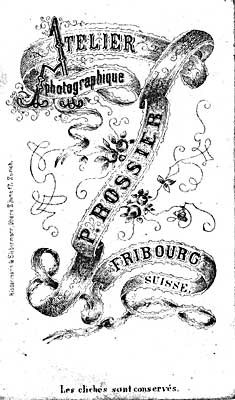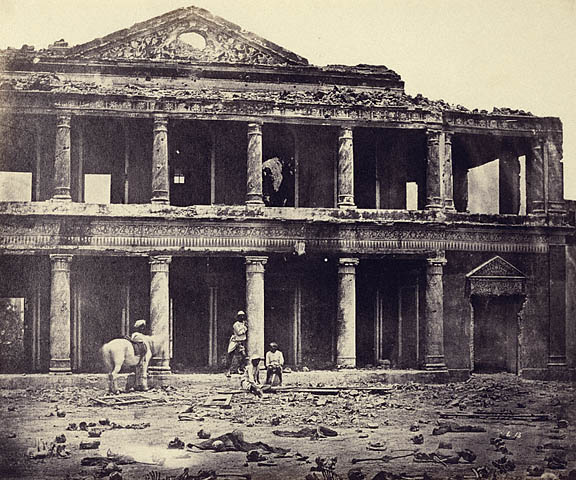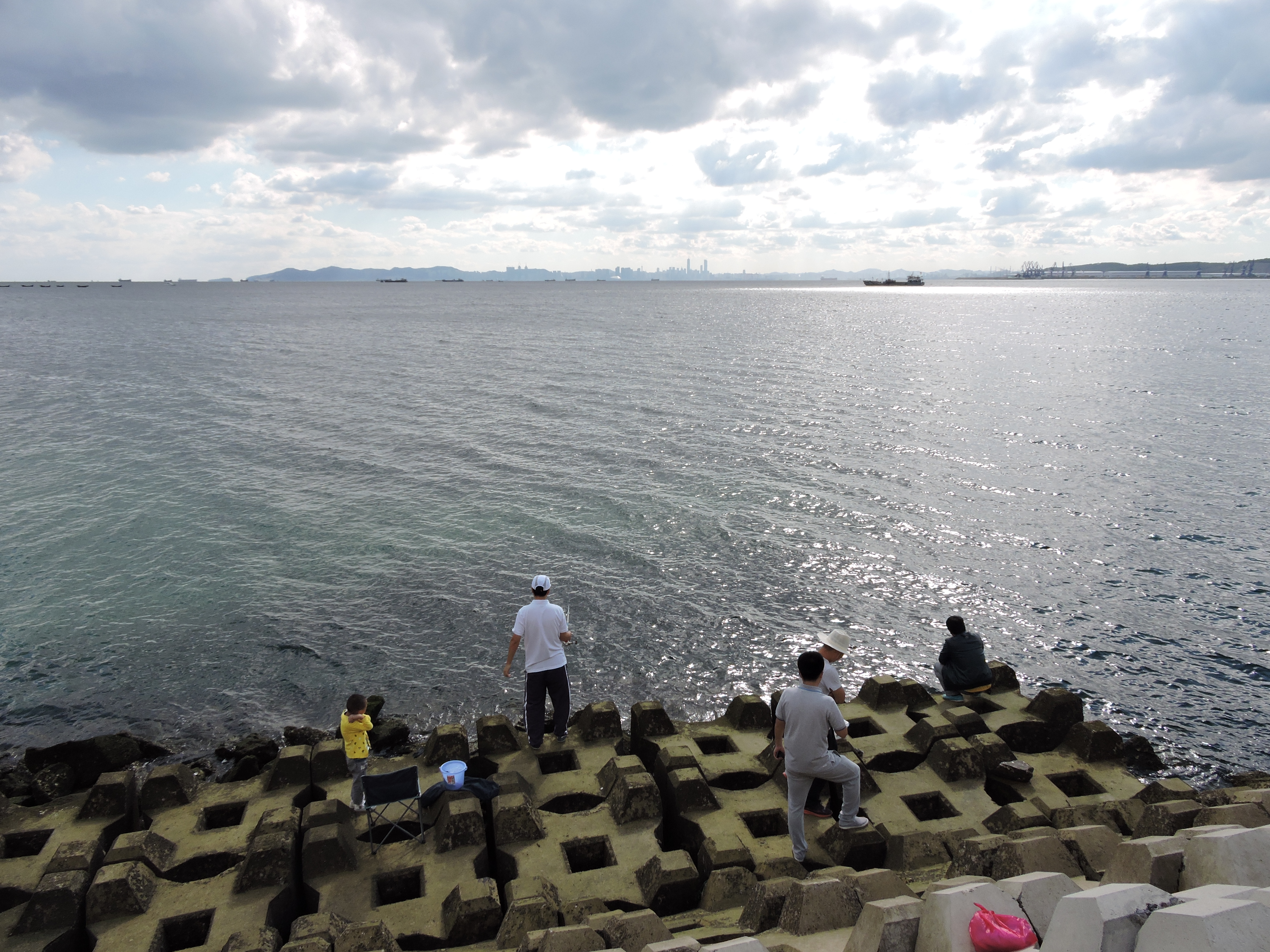|
Pierre Rossier
Pierre Joseph Rossier (16 July 1829 – 22 October 1886) was a pioneering Swiss photographer whose albumen photographs, which include stereographs and cartes-de-visite, comprise portraits, cityscapes, and landscapes. He was commissioned by the London firm of '' Negretti and Zambra'' to travel to Asia and document the progress of the Anglo-French troops in the Second Opium War and, although he failed to join that military expedition, he remained in Asia for several years, producing the first commercial photographs of China, the Philippines, Japan and Siam (now Thailand). He was the first professional photographer in Japan, where he trained Ueno Hikoma, Maeda Genzō, Horie Kuwajirō, as well as lesser known members of the first generation of Japanese photographers. In Switzerland he established photographic studios in Fribourg and Einsiedeln, and he also produced images elsewhere in the country. Rossier is an important figure in the early history of photography not only because ... [...More Info...] [...Related Items...] OR: [Wikipedia] [Google] [Baidu] |
Louis Legrand (photographer)
Louis Legrand (19th century) was a French photographer based in Shanghai who may have been commissioned to accompany French forces and photographically document their participation in the Anglo-French military expedition to northern China during the Second Opium War The Second Opium War (), also known as the Second Anglo-Sino War, the Second China War, the Arrow War, or the Anglo-French expedition to China, was a colonial war lasting from 1856 to 1860, which pitted the British Empire and the French Emp ... in 1860. No evidence has yet been found that Legrand actually joined the expedition or took photographs on it. References * Thiriez, Régine. ''Barbarian Lens: Western Photographers of the Qianlong Emperor's European Palaces'' (Amsterdam: Gordon and Breach, 1998), 6, 7. 19th-century births 19th-century deaths 19th-century French photographers French expatriates in China 19th-century French people Place of birth missing {{France-photographer-stub ... [...More Info...] [...Related Items...] OR: [Wikipedia] [Google] [Baidu] |
Antoine Fauchery
Antoine Julien Nicolas Fauchery (15 November 1823 – 1861) was a French adventurer, writer and photographer with republican sympathies. He participated in the national uprising in Poland in 1848 ( Greater Poland Uprising), opened a photographic studio in Melbourne, Australia, in 1858, and was commissioned to accompany the French forces as they progressed to Beijing during the last stage of the Second Opium War in 1860. He wrote thirteen long dispatches from the front-line for '' le Moniteur'', the official French government newspaper. He died in Yokohama of dysentery. Early life and interests Antoine Fauchery was born in Paris, France, the son of Julien Fauchery, a merchant, and his wife Sophie Gilberte Soré (other sources have 'Soret'). His parents, who married in 1818, are recorded as having a baby girl, Barbe Julie Sophie, in 1820, three years before Antoine's birth on 15 November 1823. Fauchery's initial interests were in architecture, painting and engraving. Wri ... [...More Info...] [...Related Items...] OR: [Wikipedia] [Google] [Baidu] |
John Papillon
John Ashton Papillon (1838–1891) was a British photographer and Royal Engineer who was commissioned to accompany and photographically document the Anglo-French military expedition to northern China during the Second Opium War in 1860. Papillon produced images taken from between Canton and the Taku Forts The Taku Forts or Dagu Forts, also called the Peiho Forts are forts located by the Hai River (Peiho River) estuary in the Binhai New Area, Tianjin, in northeastern China. They are located southeast of the Tianjin urban center. History The f ... but became ill and was evacuated on 29 September 1860 before completing his mission. References * Bennett, Terry. ''History of Photography in China, 1842-1860'' (London: Bernard Quaritch Ltd., 2009). (hbk), (hbk) * Thiriez, Régine. ''Barbarian Lens: Western Photographers of the Qianlong Emperor's European Palaces'' (Amsterdam: Gordon and Breach, 1998), 6. 19th-century British photographers British people of the Second ... [...More Info...] [...Related Items...] OR: [Wikipedia] [Google] [Baidu] |
Felice Beato
Felice Beato (1832 – 29 January 1909), also known as Felix Beato, was an Italian–British photographer. He was one of the first people to take photographs in East Asia and one of the first war photographers. He is noted for his genre works, portraits, and views and panoramas of the architecture and landscapes of Asia and the Mediterranean region. Beato's travels gave him the opportunity to create images of countries, people, and events that were unfamiliar and remote to most people in Europe and North America. His work provides images of such events like the Indian Rebellion of 1857 and the Second Opium War, and represents the first substantial body of photojournalism. He influenced other photographers, and his influence in Japan, where he taught and worked with numerous other photographers and artists, was particularly deep and lasting. Early life and identity A death certificate discovered in 2009 shows that Beato was born in Venice in 1832 and died on 29 January 1909 in Fl ... [...More Info...] [...Related Items...] OR: [Wikipedia] [Google] [Baidu] |
Yantai
Yantai, Postal Map Romanization, formerly romanization of Chinese, known as Chefoo, is a coastal prefecture-level city on the Shandong Peninsula in northeastern Shandong province of People's Republic of China. Lying on the southern coast of the Bohai Strait, Yantai borders Qingdao on the southwest and Weihai on the east, with sea access to both the Bohai Sea (via the Laizhou Bay and the Bohai Strait) and the Yellow Sea (from both north and south sides of the Shandong Peninsula). It is the largest fishing industry in China, fishing seaport in Shandong. Its population was 6,968,202 during the 2010 Chinese census, 2010 census, of whom 2,227,733 lived in the built-up area made up of the 4 district (China), urban districts of Zhifu District, Zhifu, Muping District, Muping, Fushan District, Fushan and Laishan District, Laishan. Names The name Yantai (."Smoke Chinese pagoda, Tower") derives from the watchtowers constructed on in 1398 under the reign of the Hongwu Emperor of t ... [...More Info...] [...Related Items...] OR: [Wikipedia] [Google] [Baidu] |
Dalian Bay
Dalian Bay (), known historically as Talienwan, Talien-wan and Talien-hwan, is a bay on the southeast side of the Liaodong Peninsula () of Northeast China, open to the Korea Bay in the Yellow Sea () in the east. Downtown Dalian lies along the southern shore of the bay. Its significance is that it is ice-free year-round, while Jinzhou Bay () on the other, northwest side of the peninsula is part of the Bohai Sea (), and is shallow and closed by ice for four months of the winter. The bay was the rendezvous point for the British fleet for the 1860 assault on China during the Second Opium War, which resulted in the naming of the naval fortress Port Arthur (now Lüshunkou District, Dalian). In 1879, about 20 small islands with their bays around Dalian were named Dalian Bay and barbettes for military use were built after that. By the end of the First Sino-Japanese War of 1894–1895, most of the barbettes were discarded and a fishery industry started quickly. Now only six barbettes re ... [...More Info...] [...Related Items...] OR: [Wikipedia] [Google] [Baidu] |
Nabeshima Clan
is a Japanese samurai kin group. Papinot, Jacques Edmond Joseph. (1906). ''Dictionnaire d’histoire et de géographie du Japon''; Papinot, (2003)"Nabeshima", ''Nobiliare du Japon'', p.38 retrieved 2013-5-5. History The clan controlled Saga Domain from the late Sengoku period through the Edo period. The Nabeshima clan was a cadet branch of the Shōni clan and was descended from the Fujiwara clan. In the late 12th century, Fujiwara no Sukeyori, a descendant of Fujiwara no Hidesato in the 9th generation, received the title of '' Dazai Shōni'' (equivalent to that of vice-governor of the military government of Kyūshū) from ''Shōgun'' Minamoto no Yoritomo, and the title became the family name. The clan played an important role in the region as early as the Muromachi period, when it helped suppress opposition to the Ashikaga shogunate's control of Kyūshū. It did not take the name Nabeshima, however, until the late 15th century, when Shōni Shigenao established himself at Na ... [...More Info...] [...Related Items...] OR: [Wikipedia] [Google] [Baidu] |
Samurai
were the hereditary military nobility and officer caste of medieval and early-modern Japan from the late 12th century until their abolition in 1876. They were the well-paid retainers of the '' daimyo'' (the great feudal landholders). They had high prestige and special privileges such as wearing two swords and ''Kiri-sute gomen'' (right to kill anyone of a lower class in certain situations). They cultivated the '' bushido'' codes of martial virtues, indifference to pain, and unflinching loyalty, engaging in many local battles. Though they had predecessors in earlier military and administrative officers, the samurai truly emerged during the Kamakura shogunate, ruling from 1185 to 1333. They became the ruling political class, with significant power but also significant responsibility. During the 13th century, the samurai proved themselves as adept warriors against the invading Mongols. During the peaceful Edo period (1603 to 1868), they became the stewards and chamberlains of ... [...More Info...] [...Related Items...] OR: [Wikipedia] [Google] [Baidu] |
Alexander Von Siebold
Alexander George Gustav von Siebold (August 16, 1846 – January 1911) was a German translator and interpreter active in Japan during the Bakumatsu period and early Meiji period. He was the eldest son of Japanologist Philipp Franz Balthasar von Siebold. Biography After his father was deported from Japan in 1829, he settled in Leyden, in the Netherlands. He eventually married in Germany and had three sons and two daughters. After the signing of the Japan-Netherlands Commercial Agreement, one of the unequal treaties ending Japan’s national isolation policy in 1858, von Siebold returned to Japan in 1859, bringing the young Alexander with him. Living in Nagasaki, Alexander rapidly became fluent in the Japanese language. When his father obtained a position as a foreign advisor to the Tokugawa shogunate, father and son travelled to Edo (modern-day Tokyo). As father Von Siebold acted against the wishes of the Dutch government he was told to return to Java in 1861. Before his father ... [...More Info...] [...Related Items...] OR: [Wikipedia] [Google] [Baidu] |
Philipp Franz Von Siebold
Philipp Franz Balthasar von Siebold (17 February 1796 – 18 October 1866) was a German physician, botanist and traveler. He achieved prominence by his studies of Japanese flora (plants), flora and fauna (animals), fauna and the introduction of Western medicine in Japan. He was the father of the first female Japanese doctor educated in Western medicine, Kusumoto Ine. Career Early life Born into a family of doctors and professors of medicine in Würzburg (then in the Bishopric of Würzburg, later part of Bavaria), Siebold initially studied medicine at the University of Würzburg from November 1815, where he became a member of the German Student Corps, Corps Moenania Würzburg. One of his professors was Franz Xaver Heller (1775–1840), author of the ' ("Flora of the Grand Duchy of Würzburg", 1810–1811). Ignaz Döllinger (1770–1841), his professor of anatomy and physiology, however, most influenced him. Döllinger was one of the first professors to understand and tr ... [...More Info...] [...Related Items...] OR: [Wikipedia] [Google] [Baidu] |






